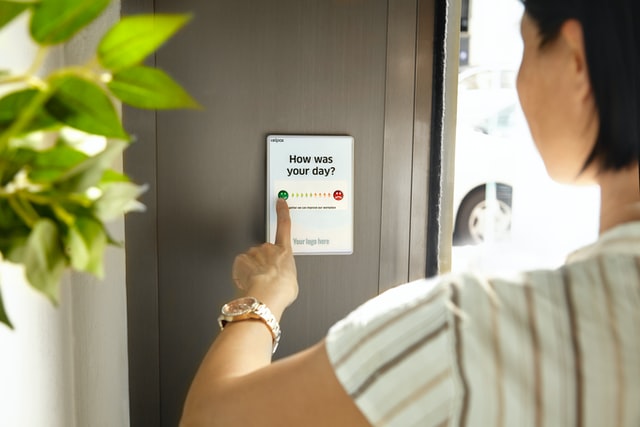
10 min
0
10.04.2022

In terms of research, sampling makes for a crucial part of the methodology. It is the selection of a subset of the population from a larger group with shared characteristics. At some point in your journey of academic career, you may have to conduct primary research, getting you to take the opinion of a target population in the process of investigating a research question. If you haven't yet cut your teeth on research, you may have your head surrounded with many "hows", "whens", and "wheres". But, don't worry, today you're in the right place.
Sampling Methods And Size Suitable For Qualitative Research
Due to its open-ended nature, a qualitative study is always going to be more time-consuming than its counterpart. With this in view, these two research methods are generally preferable while dealing with qualitative research:
Purposive Sampling
It involves choosing the participants based on demographic and other characteristics, such as preferences, taste, income level, etc. in line with the nature and objectives of the study. Unlike random sampling, in purposive one, the researcher actively engages in laying out the criteria for the informants. Only the respondents reasonably satisfying these criteria are invited to partake.
Now the question arises why purposive sampling for qualitative research? As mentioned, such studies have no restriction in terms of time or space to the respondents' input. The participants may adjust the spillways of information to any point. Given this, it is essential for the respondents to be filled with the desired knowledge or be equipped with the relevant skill-sets. A random selection can barely serve this purpose which makes purposeful sampling a perfect fit for this endeavor.
Convenience Sampling
A researcher applies convenience sampling if they target the respondents who are easily available. The logic behind using this type of sampling for qualitative research is simple. As told, qualitative research takes a comparatively greater amount of time. So, the researchers, when faced with time-constraints, may have to make smart choices. It makes sense to rely on people who are on hand rather than moving proposals with a number of respondents with the least assurance of their interest.
Sample Size for Qualitative Research
Since you are consciously engaged in selecting the participants using non-probability methods, it is undesirable to chase a sizable number. What makes a small size more suitable is the amount of time that the researcher has to spend with each participant. A few respondents, handpicked for the study, can serve the purpose because they are sure to have adequate knowledge around the concerned area of research. In most cases, 10-12 participants may cut it for the panel discussion. For an interview, the researchers may rely on 5-10 experts. However, as a thumb-rule, the greater, the better.
Sampling Methods And Size Suitable For Quantitative Research
Quantitative research design ensures the quicker process of data collection. Mostly, the survey respondents or the participants of a questionnaire have to respond to close-ended questions. All they have to do is mark their choice, either on Likert or any other scale or order of questions, and submit. In such types of studies, independent and dependent variables are well defined and the researcher seeks exact measures. This understanding leads to the following choices:
Random Sampling
For sure, the generalization of data is possible only if the results represent the entire target population. In qualitative research, it is attainable through purposive sampling as the respondents can go on to any length. However, in quantitative research, responses are measured in numbers. The greater the number of responses, the more representative those numbers would be.
This can be understood with a simple example. Let's say a town houses 1000 residents and the researcher has to conduct a poll to assess the support of residents for the democratic vs liberal party. Let's say, he selects 50 individuals based on shared characteristics (high educational level and high-income level). Would their responses be generalizable? A big "no", because they represent only the higher income group of their population and not the entire population. A better way to go about it is to randomly pick a decent number of participants. It will come with the probability that the targeted subset of the population is diverse enough to represent the town's population as a whole.
With this being clear that random sampling is a better choice when it comes to quantitative research, let's have a quick look at its key types:
- Simple random sampling: It is when you choose participants from a large population without regard to any characteristics.
- Cluster sampling: It involves dividing the entire sampling frame into small clusters and then randomly picking the clusters. You can pick as many clusters as desired depending on the needs and budget.
- Stratified sampling: It is one of the most widely used methods which involves dividing a population into subsets with shared characteristics (e.g. high-income group, low-income group). Then, you can randomly pick the participants from those subsets. This type of sampling is suited for projects that involve assessing the interaction between participants' responses to a certain phenomenon and given characteristics.
- Systematic sampling: If your research calls for insights on what every second, third, or Kth person says about something, systematic sampling is going to be the top choice. You obtain the "Kth" number by dividing the total population (N) by the number of participants in the subset of the population (n).
For example, you have to conduct a survey on the customer's opinion about the quality of food in a fast-food restaurant. Let's say the restaurant serves 100 customers on average every single day and you think responses from 20 customers would be highly representative. Here, your population size is "100" and sample size "20". Let's apply the formula:
N/n=Kth; 100/20=5(th)
Hence, you can randomly approach each 5th customer pouring out of the restaurant.
Acceptable Margin for Error
During the statistical analysis of information gathered from a sample, what you may have to worry about is 'error'. Howsoever precautions you may be and whatsoever techniques you may apply, the margin for error is always there. All you can do is minimize that margin to an acceptable range.
Acceptable margin may vary with the type and objectives of the research. Having said that, there is considerable consensus over 4%-8% being the permissible range when the confidence interval is set at 95% (say if a poll or survey is repeated 95 percent of times, the findings will not deviate more than 4% to 8%).
If the range of error exceeds that margin, it will put the reliability and transferability of your research to question.
How to Calculate Margin for Error
In general, you can apply the following formula to assess the margin for error in research:
Margin for Error = z-score (constant value derieved from the confidence interval) x standard deviation/underroot "n" (sample population size)
For example, your research is focused on a sample of 100 participants with a standard deviation of 0.5 at a confidence interval of 95%. Suppose, the z-score is 1.9. The margin of error will be as under:
Margin for Error = 1.9 x 0.5/10 = 0.095
How to Reduce the Chance of Errors
To continuously restrict the chances of errors to an acceptable range, you should make sure:
- The sample size is large enough to be representative of the target population for a particular research question;
- You keep your personal bias suspended while interacting with the population;
- The results are accurately calculated and presented;
- You are well aware of your population's characteristics.
Criteria for Choosing Respondents?
Here's what to make sure while fishing around for respondents:
- Participants are knowledgeable: Make sure the participants have enough grasp of the subject or case of the study at hand;
- Participants are available in the given time: Your respondents must respond within a given time-frame. Schedule interviews and questionnaires keeping the budget constraints in view. If a prospective respondent may not be able to show up within a given time, you may drop them and go for a more suitable one.
Where To Find Respondents?

Purchasing your Panel Respondents
Your panel will consist of a group of people who should belong to a relevant background and be agreeable to participating in your survey research. There are multiple services available that are selling bespoke and ready-made participant lists, such as Survey Monkey, Survey Savvy, My Points, Inbox Dollars, and Branded Surveys to name only a few. You can easily access a wider selection of people who have the potential of being your prospective respondents.
Taking Help From Social Media
Depending on what your research objectives are, online surveys can be a great method to target more potential participants. This can be done by widely sharing your survey with people on several social media platforms. The beauty of using this option is that you may also invite your relatives and friends with their social media accounts to help you out.
In-person Contact
With a clear target audience in mind, build your survey design around meeting the audience where they are. This is beneficial in the cases where you are seeking participation from demographics who fail to respond online. For example a sample of elderly people who are not tech-savvy. For research focusing on the elderly population, you may visit senior citizen community halls and other places where people from this age group congregate. You may find your respondents at shopping malls, outside a large outlet, passing by a roadside, etc. You may ask the respondents to show their voluntary consent to the participant to share their phone numbers (obviously, on a condition of confidentiality). Since COVID has limited the in-person interaction, you may encourage the participants, found at any of these spots, to share their phone numbers (for the sole purpose of research). Later on, you can conduct telephone surveys according to the schedules agreed upon.
How to Convince Respondents to Participate?
The response rate is largely hinged on your success in convincing the respondents to partake. You may utilize any of these methods to maximize participation:
- Showing the respondents the importance of partaking for them, as well as for the intended audience (yes, the ethical appeal may come in handy);
- Keeping the process of participation smooth; participants may feel reluctant if it comes with the irksome hassle;
- Incentivizing the participation (e.g. monetary benefit or meal) if the budget allows.
With all these tips taken home, you are on your way to ace your upcoming research assignment. Trial and error is the part of the game but what you have learned in this post can pave the path to the best possible outcomes, be it your maiden or 100th project.



